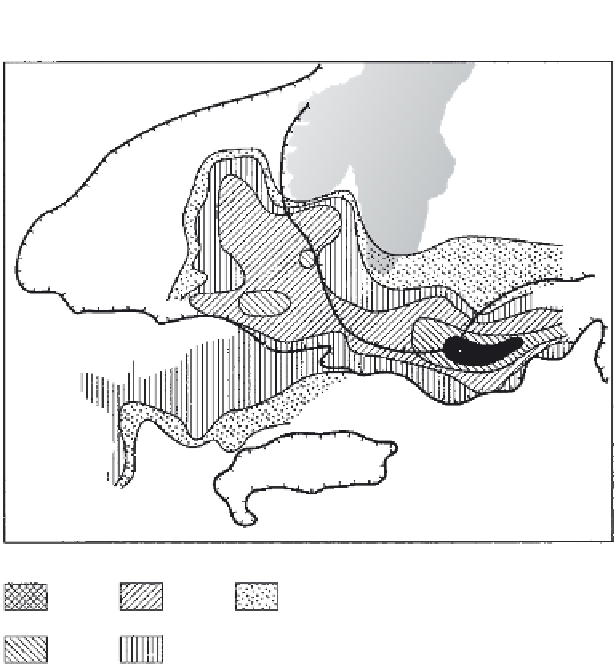Geology Reference
In-Depth Information
Alps
Weichselian ice limit
>80%
40-60%
<20%
Elster-Saale ice limit
60-80%
20-40%
Figure 13.7.
The distribution and frequency of occurrence of wind-modifi ed sand grains
(0.4-0.1 mm) in Europe according to A. Cailleux (1942).
Saskatchewan (Fisher, 1996), and north-central United States (Sharp, 1949). In most
cases, ventifacts are found in association with sand, often buried by younger sediments.
Sometimes, they form layers of abraded pebbles from between which fi ner particles have
been winnowed out.
Although ventifacts allow paleo-environmental inferences to be made as to wind direc-
tion and intensity in certain areas, the majority can only be used as supporting evidence.
This is because the grooves, fl uting, and facets are rarely of constant orientation and most
ventifacts have probably experienced movement over time. Even when large wind-polished
boulders are examined, as in Denmark (Christiansen and Svensson, 1998), it is diffi cult
to unambiguously identify the wind systems that were involved (Christiansen and Sven-
sson, 1999; Vandenberghe et al., 1999).
13.3.2. Eolian Silt (Loess)
Well-sorted eolian silt is termed loess. Pleistocene-age loess is thought either to have
originated from glacially-derived outwash surfaces at the margins of the retreating ice
sheets or to have been transported from the deserts of Central Asia. Loess is largely a
northern-hemisphere phenomenon and usually confi ned to the mid-latitudes. Loess-like
silt of the higher latitudes (Péwé, 1955; Péwé and Journaux, 1983; Péwé et al., 1995) is
discussed in Chapter 11.














